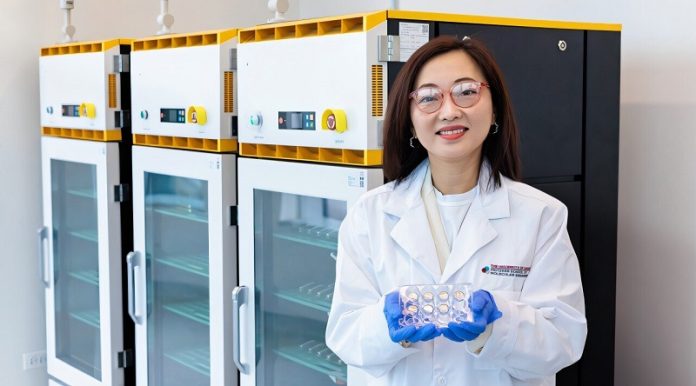
Scientists have discovered a new way to make batteries work better—by changing the texture of metal inside them.
This finding could lead to better batteries for electric cars, mobile devices, and renewable energy storage.
For years, researchers have worked to improve batteries by testing new materials, designs, and chemical combinations.
However, one key factor—the texture of the metal used—has been largely ignored.
“Soft metals like lithium and sodium are great for battery anodes, especially lithium, which is considered the ultimate choice for future high-energy batteries,” said Professor Shirley Meng from the University of Chicago.
“But we haven’t fully understood how the texture of these metals affects battery performance—until now.”
A team from Meng’s Laboratory for Energy Storage and Conversion, along with experts from Thermo Fisher Scientific, has now proven that adjusting the metal’s texture can greatly improve a battery’s efficiency.
Their research was published in the scientific journal Joule.
One of the study’s key findings was that adding a very thin layer of silicon between the lithium metal and the battery’s current collector can create a better metal texture.
“This small change made the battery charge and discharge almost ten times faster in all-solid-state batteries,” explained Research Associate Professor Minghao Zhang, the study’s lead author.
The researchers found that the ideal texture for a battery’s anode is one where atoms can move quickly along the surface. This helps the battery charge faster and deliver power more efficiently.
“We discovered that the surface energy of soft metals affects their texture, and this texture plays a big role in how well a battery works,” Zhang said. “So we wondered: Could we tweak the texture to make batteries even better?”
To study this, the team used advanced microscopy techniques. They combined a special plasma-focused ion beam-scanning electron microscope (PFIB-SEM) with electron backscatter diffraction (EBSD) mapping. This allowed them to see the texture of soft metals in greater detail than ever before.
“It’s hard to analyze lithium and sodium metals because they react quickly with air and other materials,” said Zhao Liu from Thermo Fisher Scientific. “But with this new method, we could get high-quality images that showed exactly how the texture formed.”
The researchers are now working with LG Energy Solution’s Frontier Research Laboratory to bring this technology to the market. LG Energy Solution’s senior researcher, Jeong Beom Lee, said that such collaborations are essential for staying ahead in the rapidly growing battery industry.
The next challenge is to lower the pressure needed in the testing process from 5 megapascals (MPa) to 1 MPa, which is the standard for commercial batteries. The team also plans to study how texture affects sodium-based batteries, which could be a cheaper and more widely available alternative to lithium.
“Now that we know how texture forms in soft metals, we think sodium metal could be an exciting option for future all-solid-state batteries,” Zhang said. “This could be a major step forward in energy storage.”
With these discoveries, the future of battery technology looks brighter than ever. By focusing on something as simple as metal texture, scientists have found a way to make batteries faster, more powerful, and more efficient—paving the way for better electric vehicles and renewable energy solutions.



